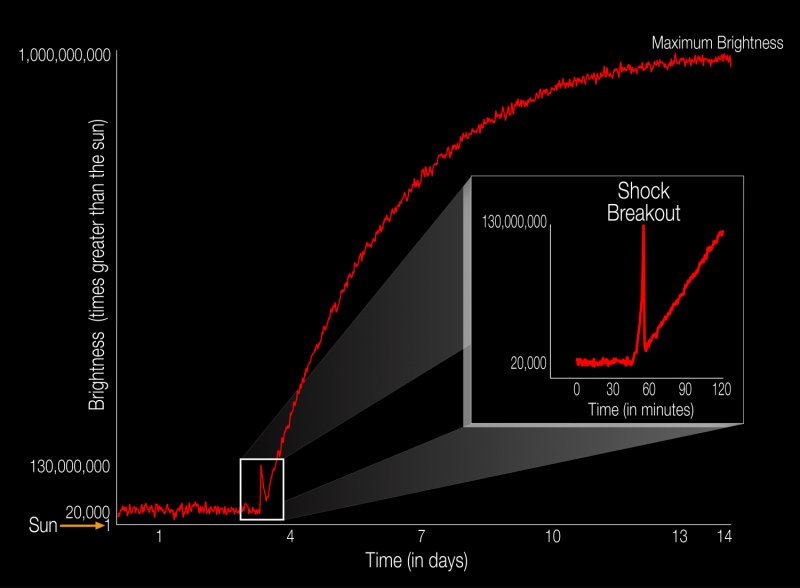
Caught in the Act
Scientists have at last observed, in visible light wavelengths, the so-called “shock breakout” of a supernova—the moment when the expanding blast wave from a dying star finally shatters the outer stellar layers and makes its grand entrance onto the cosmic stage.
The new supernova findings represent the proverbial needle in a haystack—an international team of astronomers analyzed 3 years’ worth of data, in which Kepler captured images every 30 minutes of some 50 trillion stars scattered among 500 remote galaxies.
That’s a lot of stars, but it eventually paid off in a big way.
An Observational Milestone

The astronomers finally found two supernova explosions. Two red supergiants, analogous to Betelgeuse or Antares in our own galaxy, detonated while Kepler’s unblinking eye was watching.
The first exploding star, KSN 2011a, was almost 300 times the size of our Sun and was located in a galaxy some 700 million light-years away; the second, KSN 2011d, was about 500 times the size of the Sun and was located over 1.2 billion light-years away.
“To put their size into perspective, Earth’s orbit about our Sun would fit comfortably within these colossal stars,” explains Peter Garnavich, professor of astrophysics at the University of Notre Dame in Indiana, and a member of the team.
The discovery is hailed as a milestone in observational astronomy, because the breakout shockwaves of such supernovae—called Type II, or “core collapse” supernovae—last only about 20 minutes.The light signatures accorded well with mathematical predictions, though the smaller explosion lacked the shock breakout of the larger, perhaps because the smaller star was obscured in a cocoon of gas.
The team hopes to use Kepler to hunt for further supernovae in other galaxies, and learn more about these fascinating cosmic phenomena.
